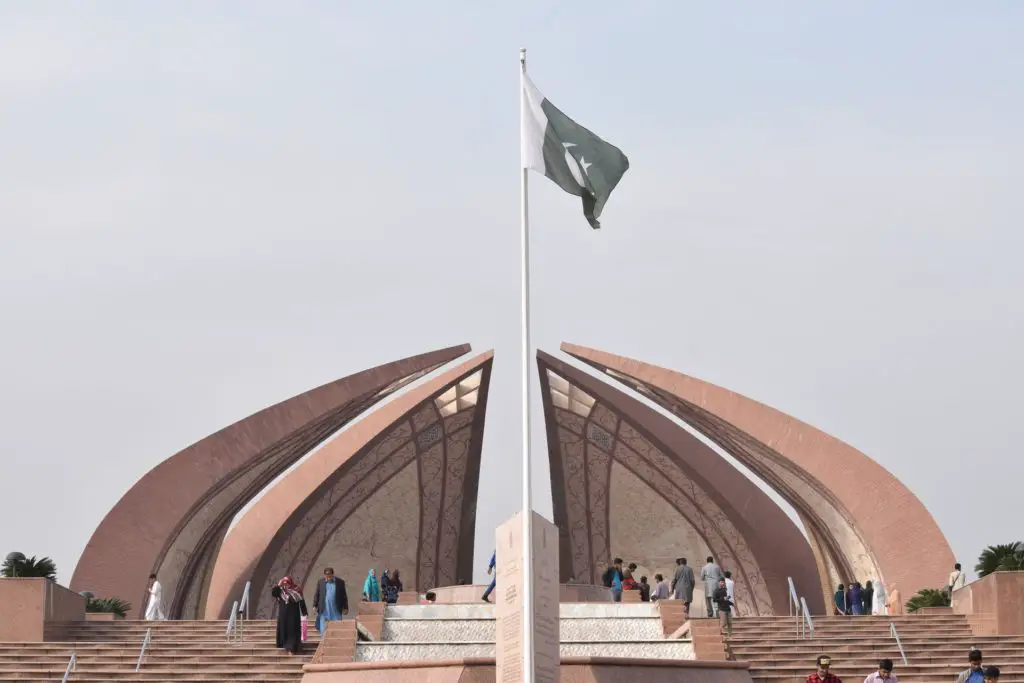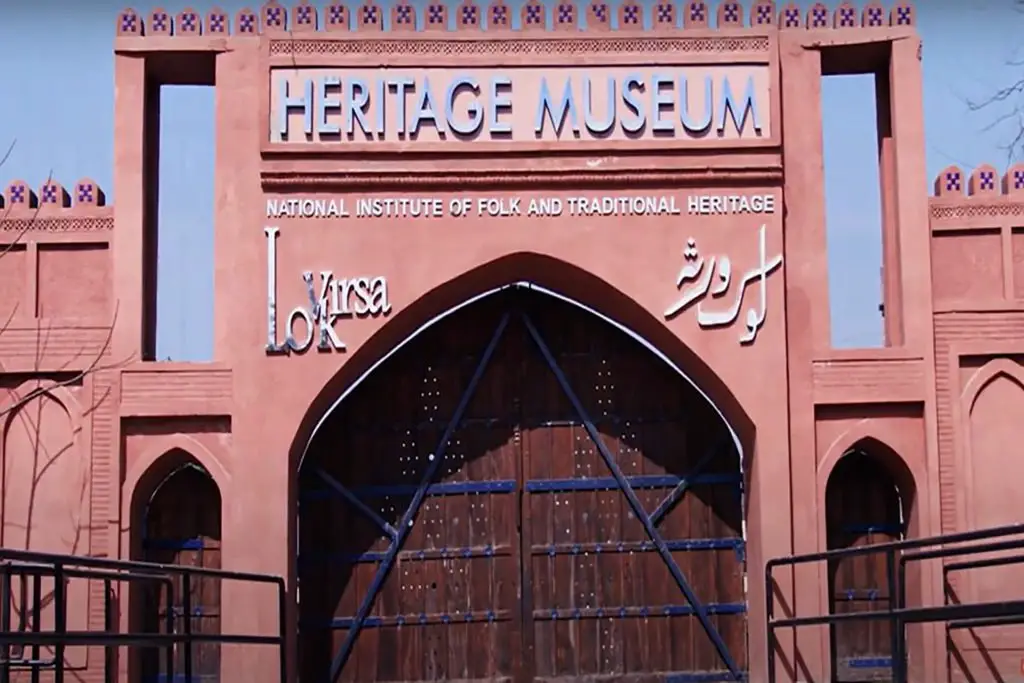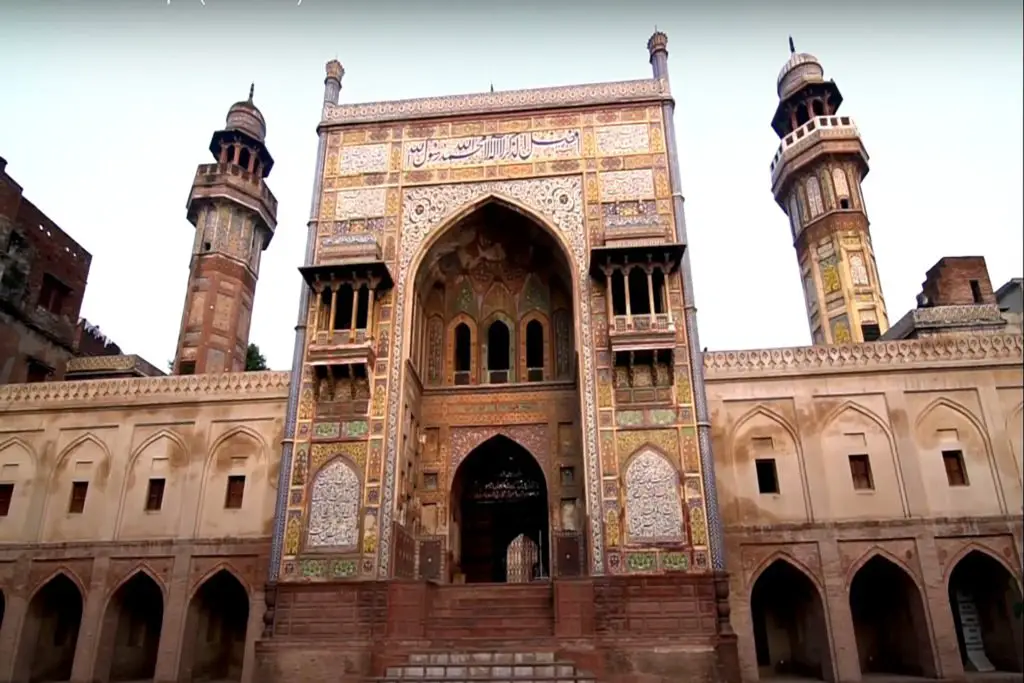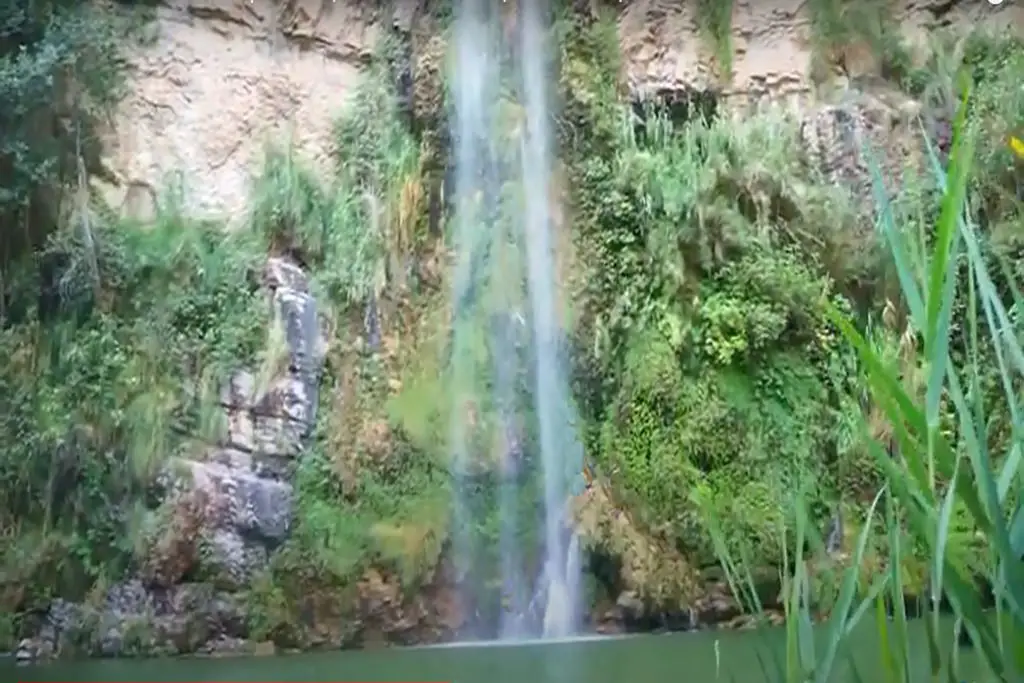The Lahore Museum or ” Lahore Wonder House” is a museum located in Lahore, Pakistan. Founded in 1865 in a small area and opened in 1894 in its present location at The Mall in Lahore during the British colonial period, the Lahore Museum is one of the most visited museums in Pakistan and is one of the largest museums in South Asia.
As the oldest cultural center in the country, the Lahore Museum seeks to educate its visitors on the deep and diverse history of Pakistan with its collection covering prehistoric times to this day. The goal of the Lahore Museum is to preserve and promote Pakistan’s cultural, visual, and material heritage.
The magnificent red-brick Lahore Museum stands on Shahrah-e-Quaid-e-Azam, formerly known as Mall Road. It opened its doors to society in 1894 and was built in the form of Indo-Saracenic architecture, which is a combination of Mughal and British Colonial Architecture. The Lahore Museum’s permanent collection holds nearly 60,000 historical, cultural, and artistic objects.
These represent the treasures of ancient and modern Pakistan and include the history of Islam, Buddhism, Sikhism, Hinduism, and Jainism. The museum introduces its guests, working on its collection of Gandharan sculptures, Islamic decorative art, miniature paintings, and rare manuscripts. As well as Indus symbols, ancient coins, ethnographic works, and drawings of the Colonial and modern period.
Currently, the Lahore Museum is busy reaching out to the public with its exhibitions and community programs.
Location of the Collection Galleries at the Lahore Museum
The Lahore Wonder House, along with the Zamzama Gun located directly in front of the building.
The museum contains a comprehensive collection of Buddhist art from the ancient Indo-Greek empires and Gandhara. It also has collections from the Mughal Empire, the Sikh Empire, and the British Empire in India.
The museum has a number of Greco-Buddhist statues, and Mughal and Pari paintings on display. The collection contains important remnants of the Indus Valley civilization, Gandhara, and Graeco-Bactrian times. The Fasting Buddha, of the Gandhara period, is one of the most important and highly respected museums.
The roof of the entrance hall includes a large portrait of Pakistani artist Sadequain who began painting on the wall in 1972 and 1973.
Pictures Gallery
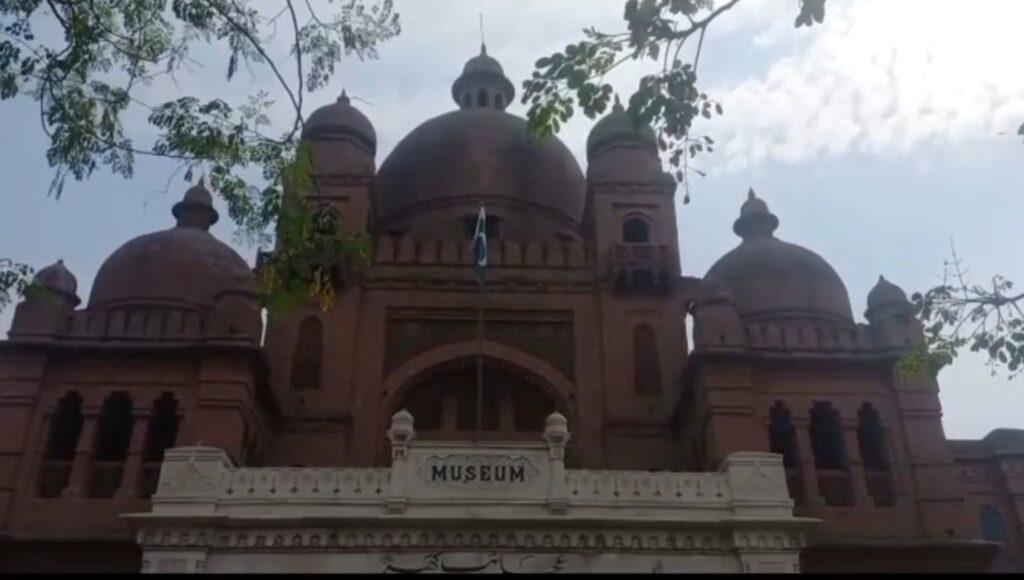
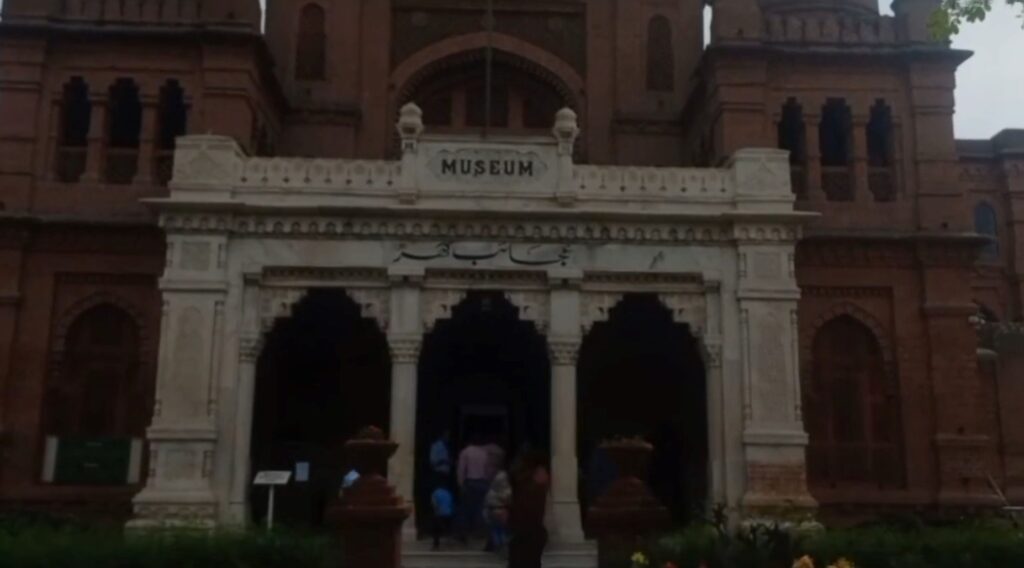
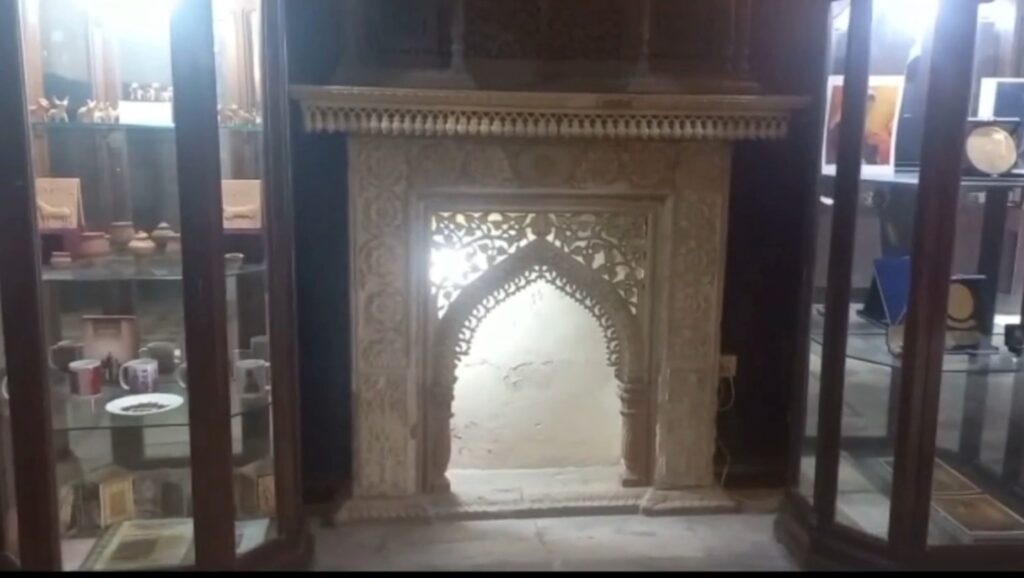
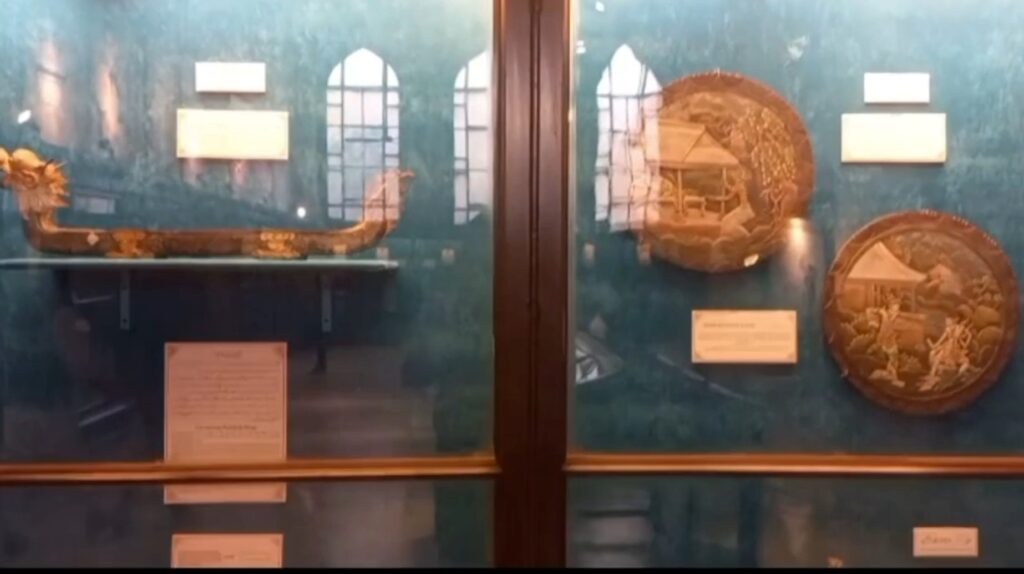
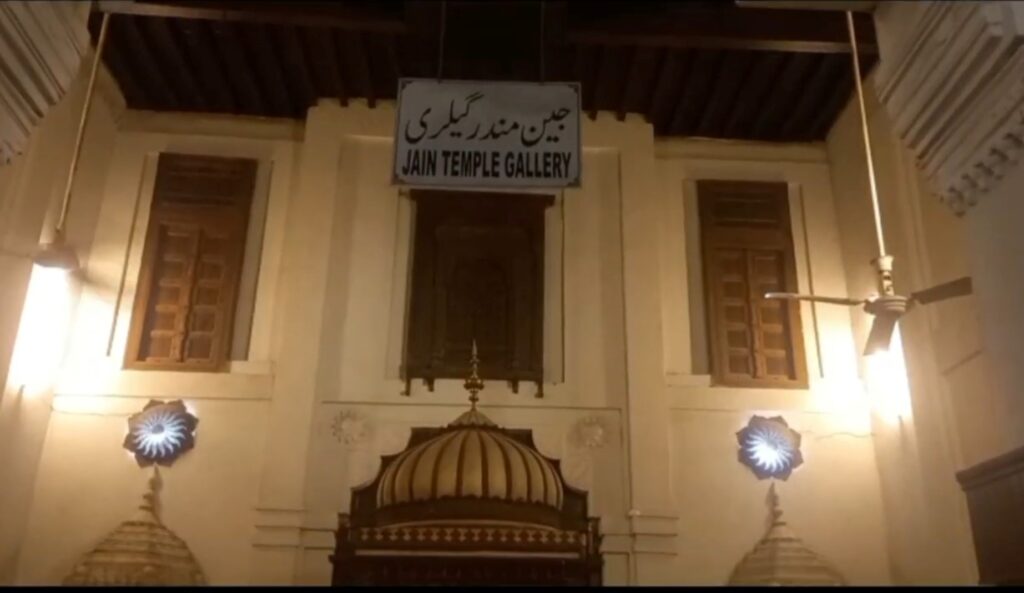
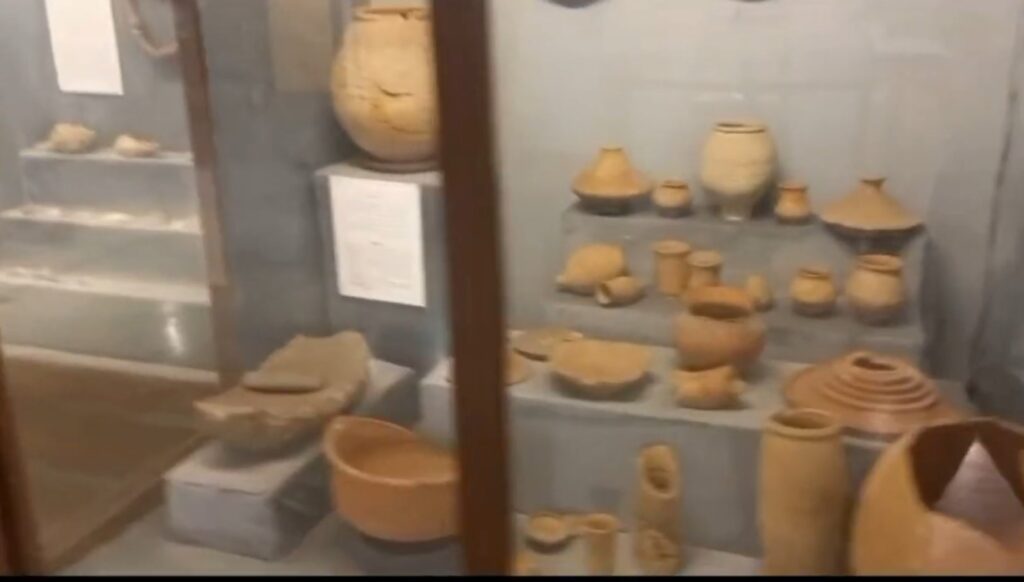
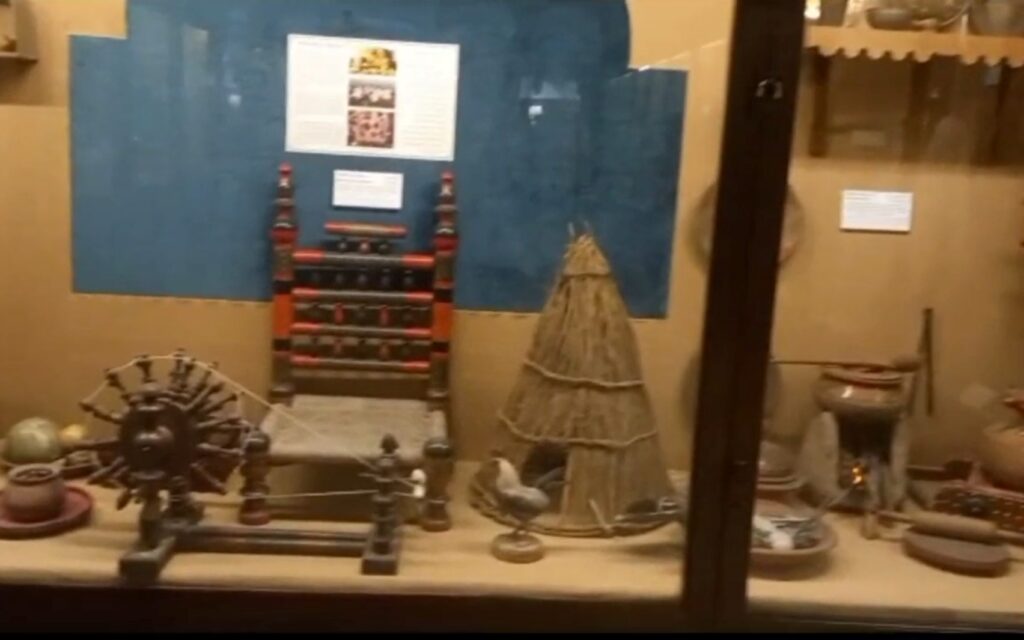
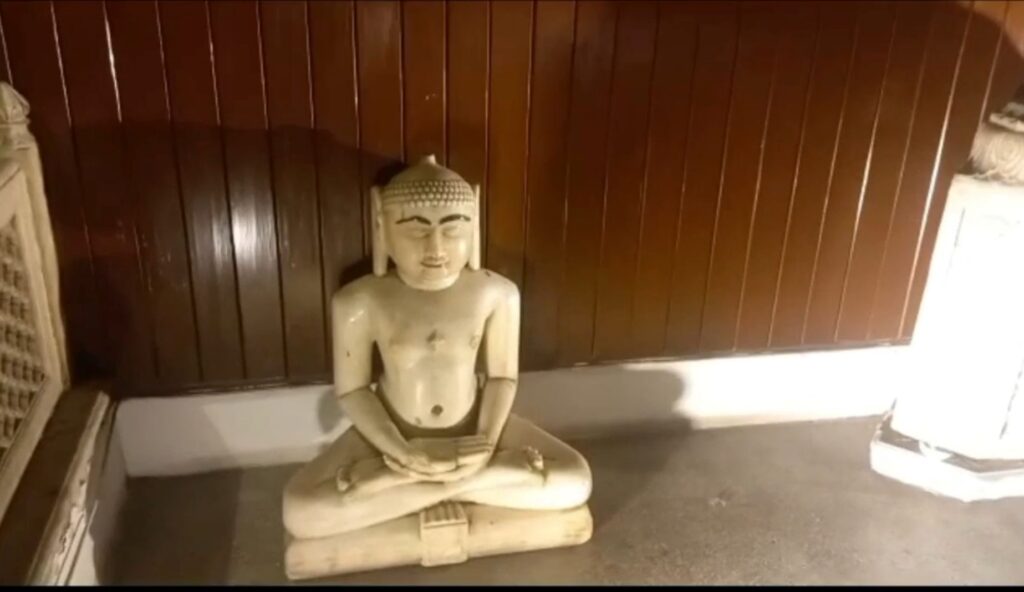
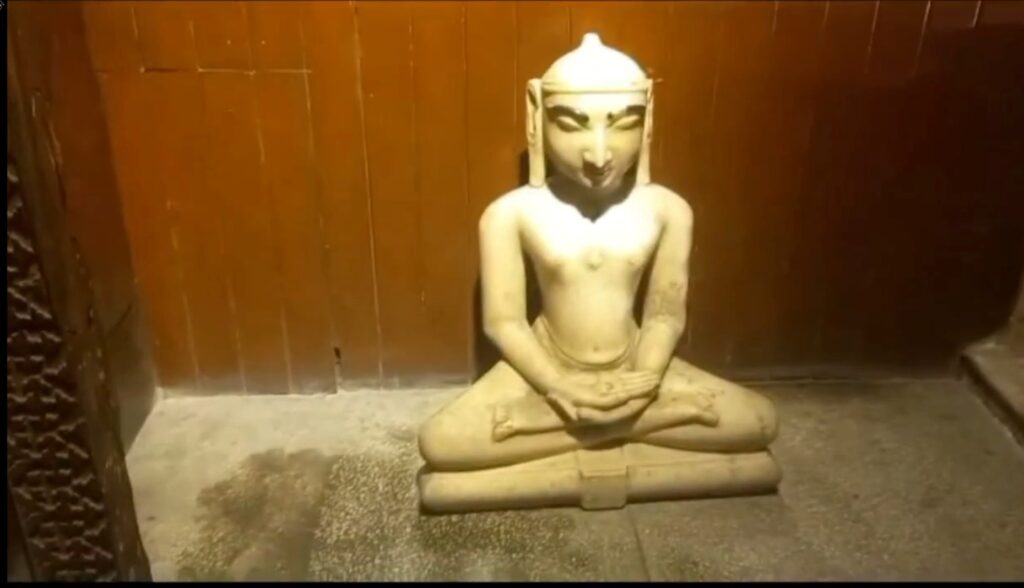
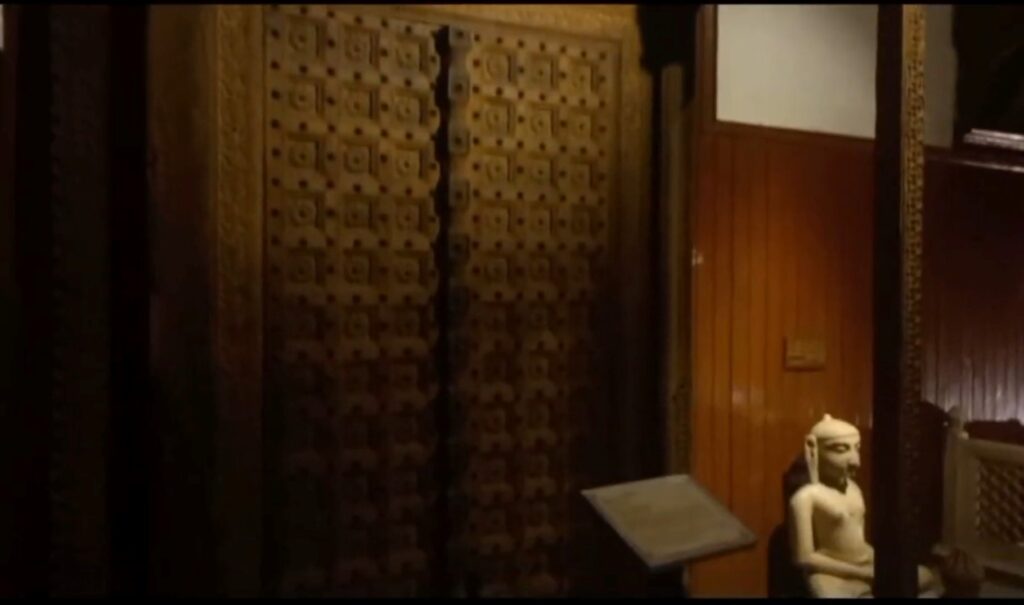
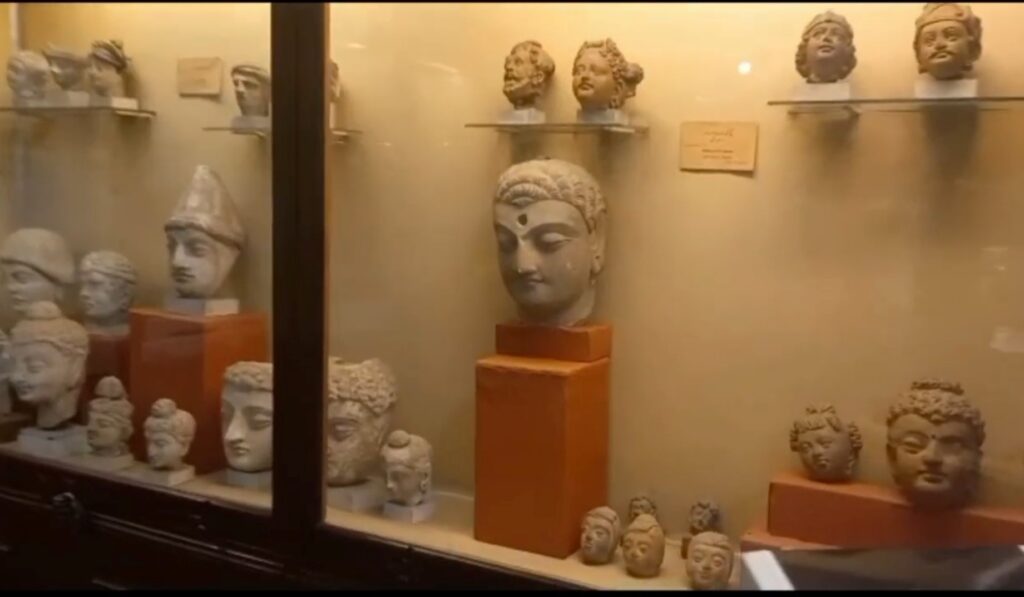
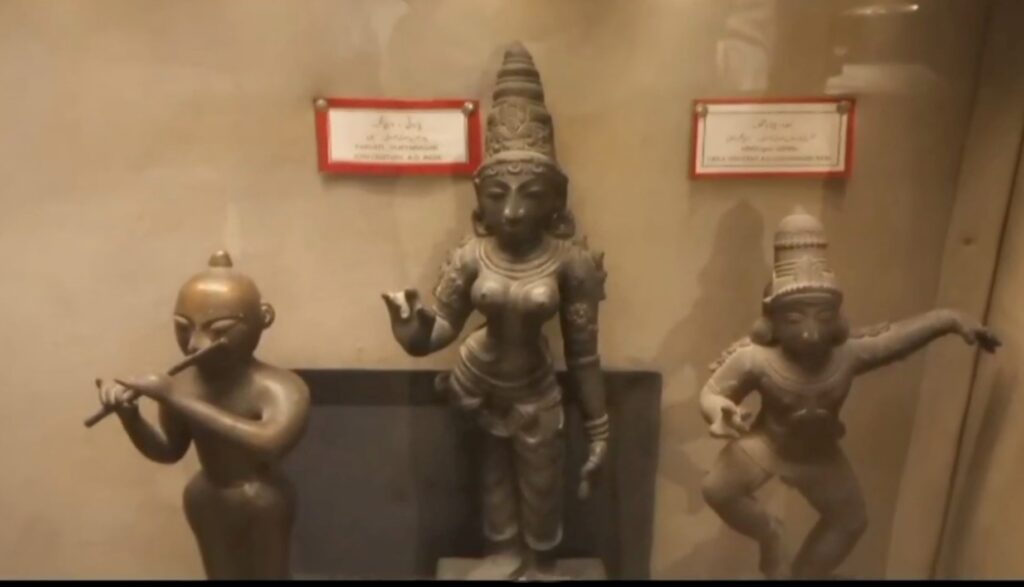
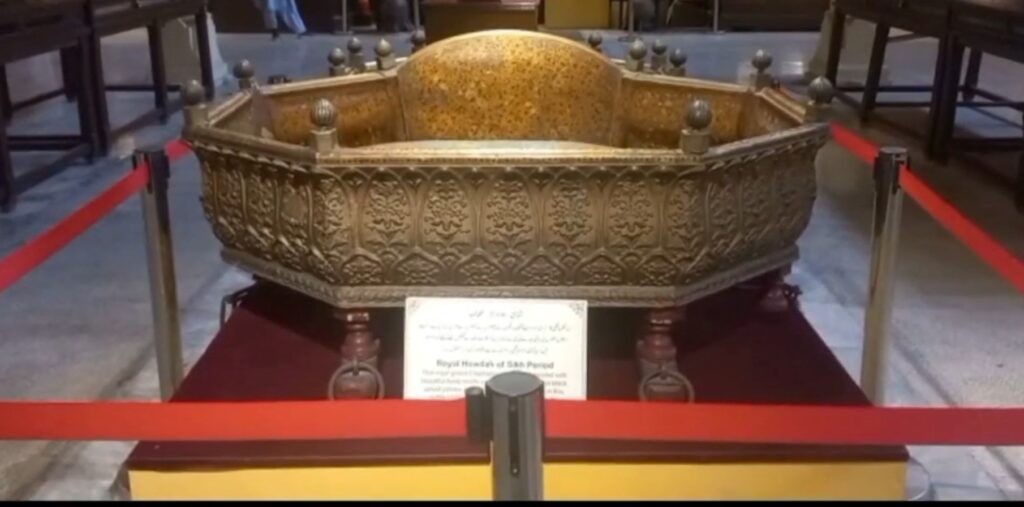
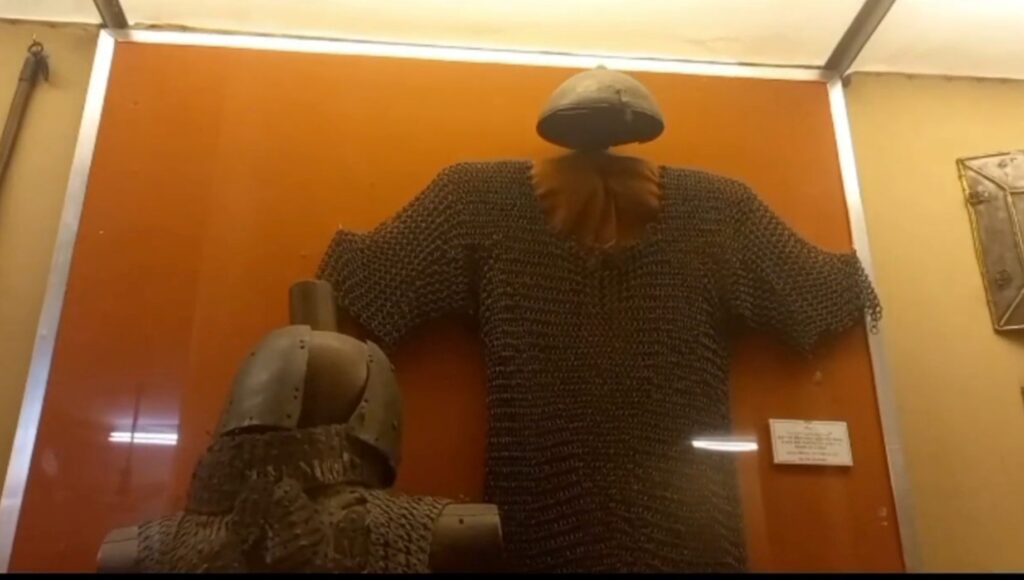
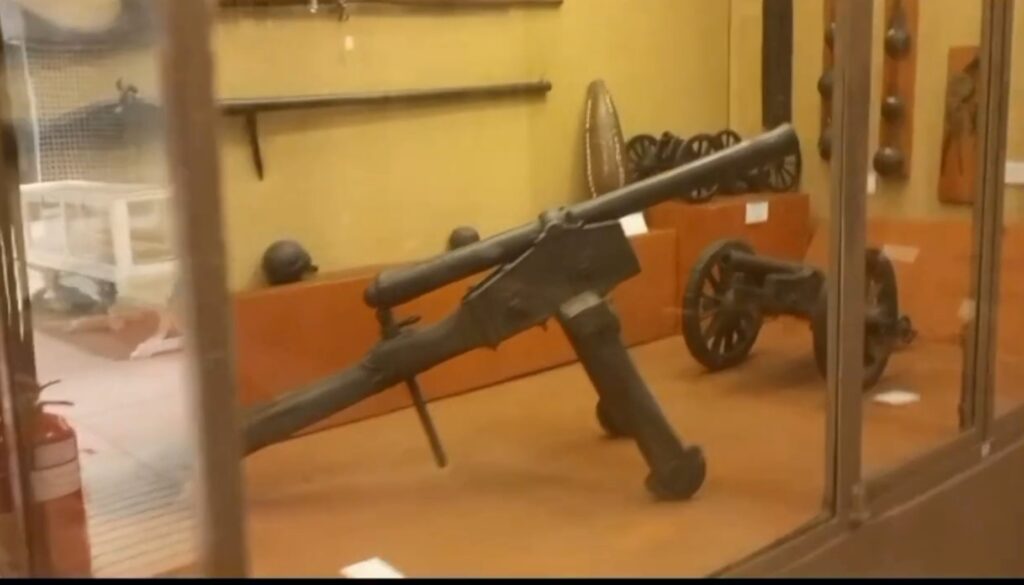
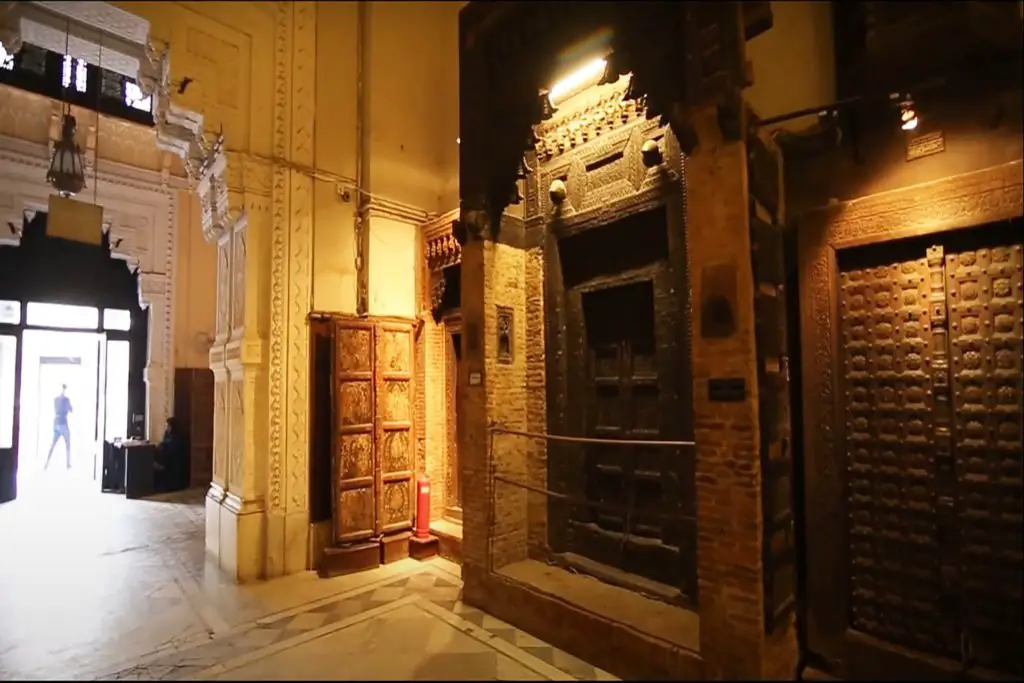
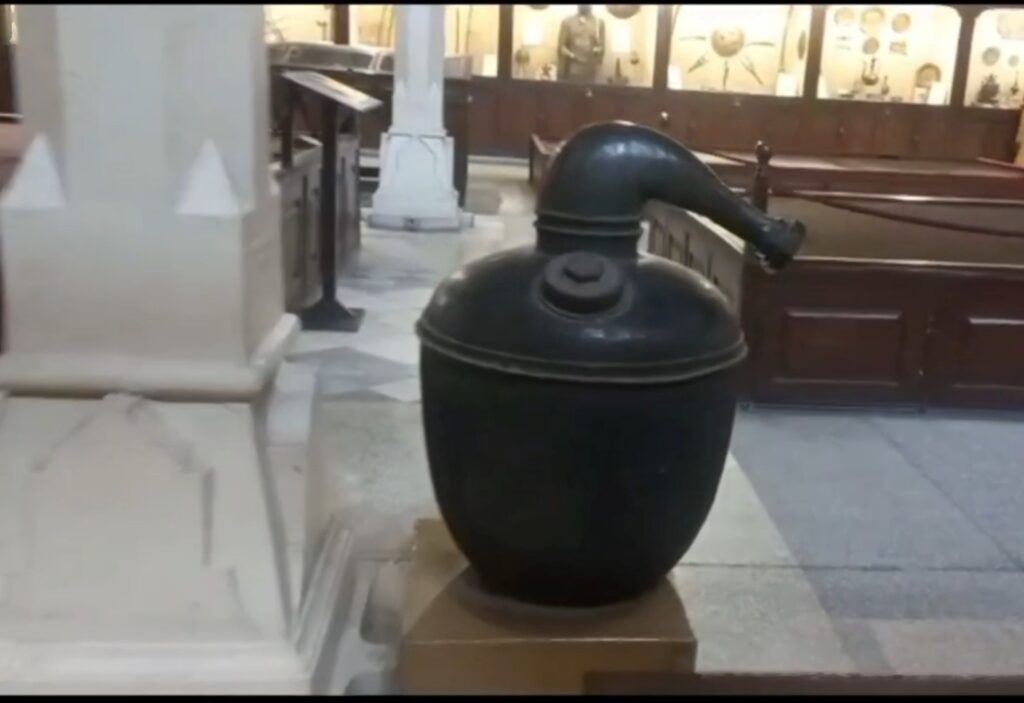
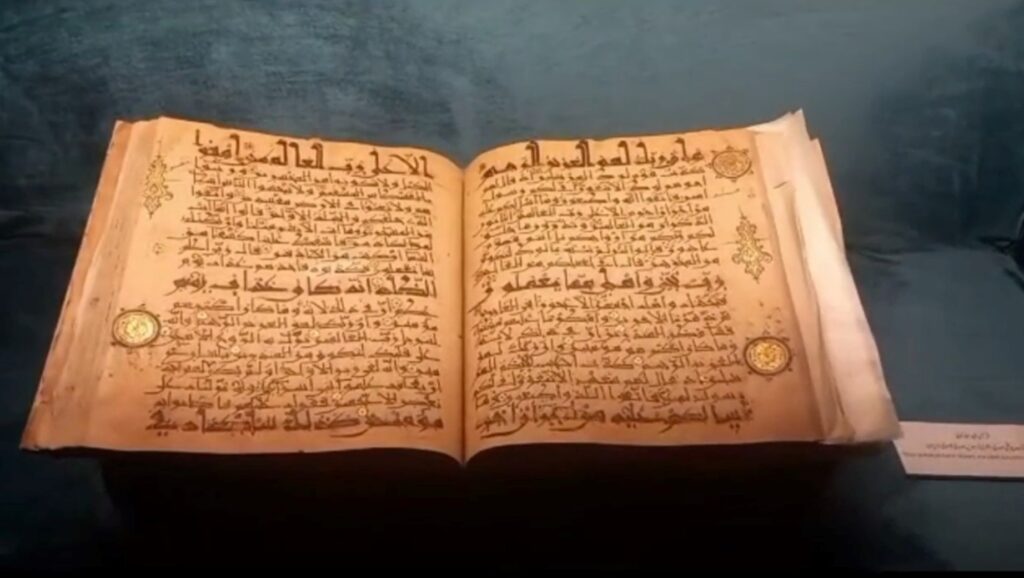
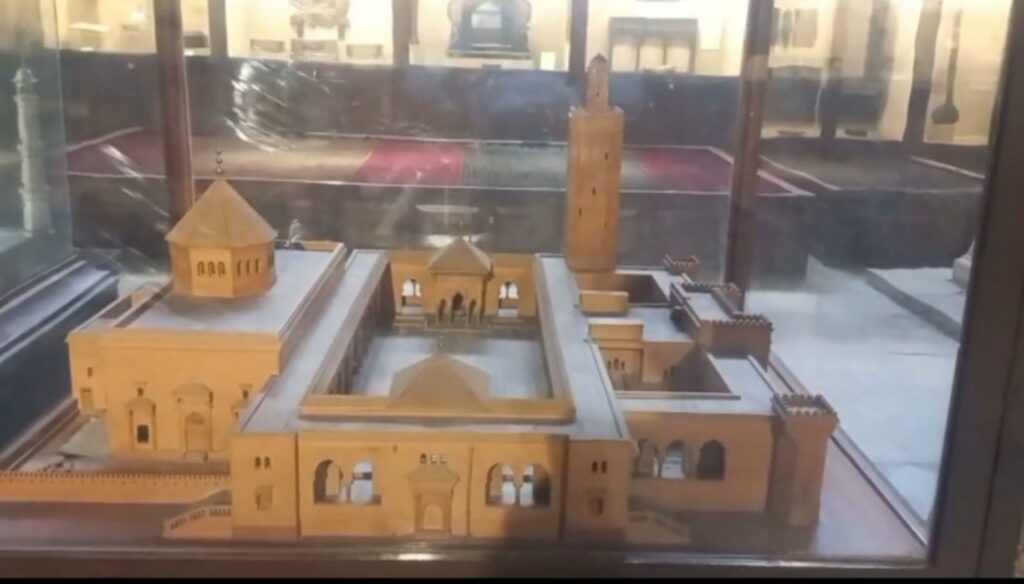
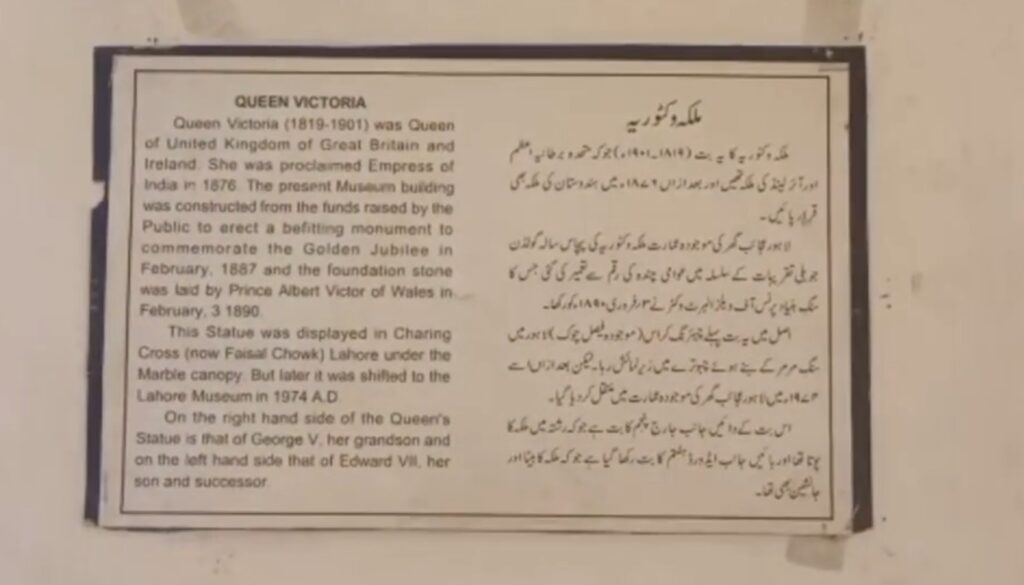
The museum also contains beautiful Mughal and Sikh sculptures of wood and has a large collection of paintings dating back to the British era. The collection includes musical instruments, antique jewelry, textiles, pottery, and an armory, as well as specific Tibetan and Nepalese work on display.
The museum exhibits archeological material from the Bronze Age (Indus Valley Civilization) to the ancient Hindu Shahi period. It contains the largest collection of archeology, history, art, fine art, applied art, ethnology, and crafts in Pakistan. It also has a comprehensive collection of Hellenistic and Mughal coins. There is also a photo gallery dedicated to the emergence of Pakistan as an independent country, the Pakistan Movement Gallery.
Collection Galleries at the Lahore Museum
General Gallery
The General Gallery stores objects and collections donated to the Lahore Museum from various private collections. The gallery has a wide range of works including manuscripts, metal and glass, plates and other archaeological finds, coins, medals, and mixed materials presented by Maulana Hifz ur Rehman (1966). African material was presented by architect and historian Kamil Khan Mumtaz in 1971.
The gallery also displays material objects and decorative significance such as wooden sculptures from Kafiristan and wooden doors from Haveli Hari Singh Nalwa, Gujranwala, and the Bava Lal Nath Temple from Jhang province.
Paintings Gallery
The museum has a unique collection of modern Pakistani paintings by many Pakistani artists and a beautiful number of paintings from the Bengal School. The Bengal school represents the work of professional artists such as Abanindranath Tagore, Asit Kumar Haldar; Nandalal Bose; Bireswar Sen; M.H. Qadari; and Rabindranath Tagore.
The paintings featured in this gallery are artists of Pre-Patition artists such as Amrita Sher Gil, Abdur Rehman Chughtai, and Ustad Allah Baksh. Artists who describe mid-century Modernism in Pakistan such as Sadequain, Ismail Gulgee, Shakir Ali, Anna Molka Ahmad, Zubaida Agha, and Anwar Jalal Shamza.
The gallery also hosts works from artists from the beginning to the last decades of Pakistani art including: Ijaz Anwar, S. Safdar Ali, Ijaz ul Hassan, Saeed Akhtar, Mehmood ul Hassan Rumi, Aslam Kamal, Colin David, Ghulam Rasool, Hanif Ramay, Ahmad Pervai, Zubaida Javed, Dr. Nazir Ahmad, Iqbal Mehdi, Jamil Naqash, Salima Hashmi, Ghulam Mustafa, Zahoor ul Akhlaq, Moyene Najmi, Iqbal Hassan and Tanveer Murshad.
The collection covers the entire history of painting in Pakistan, made with different techniques and styles.
Miniature Painting
The Lahore Museum hosts the largest and most extensive collection of small paintings on the Indian subcontinent. The collection was built in the early 20th century. It covers more than a thousand paintings, from the early 16th century to the 20th century.
These include pages of Jain manuscripts and paintings from Persian, Imperial Mughal, Provincial Mughal, and Bazar Mughal atelier. The gallery also presents small cultural paintings from Rajput and Pahari schools. Examples of Sikh images and small pictures of elephant tusks are also fun parts of this collection.
Pakistan Independence Movement
The Pakistan Movement Gallery will depart from the Arms and Armory Gallery in the upper passage. It is a gallery of black and white photographs representing important moments and figures of the Independence Movement, covering events from 1799 to 1947. The photos in this gallery are intended to honor the lives and services of both the beginner and the unknown participants. in the creation of Pakistan.
This gallery presents the struggle of the Muslim world in chronological order from the War of Plassey (1757) following posters depicting the fall of Seringapatam (1799), Faraizi Movement, Aligarh Movement, the establishment of the All India Muslim League, Khilafat. Movement, Lahore Resolution, Indian Independence Act 1947, and migration icon images. There is a special section focusing on the lives and benefits of Muhammad Ali Jinnah and Allama Iqbal.
Stamps and Postages
The gallery commemorates Pakistan’s postage stamps and postal letters from its first postal assets, dated October 1, 1947. The original stamps were printed by the Government of India Security Press on Nasik Road in India and later by the Government in Pakistan. It is interesting to note that since rubber or hand stamping was not permitted, postage stamps with rubber bullets on top were not authorized.
Some of the most important postal items presented in this gallery include the first series of postage stamps, issued by Pakistan dedicated to commemorating freedom. They were released on July 9, 1948. The collection includes the first standard series of Pakistani postage stamps released on the first day of independence on August 14, 1948.
These stamps, in twenty editions, were published by London publishers, De La. Rue & Co. Ltd. The stamps were divided into seven sections, each representing a different design such as the justice scale, fragment, and star, Lloyd’s Barrage, Karachi Port Trust building, the administrative building of Karachi airport, Muslim Hotel Dacca, and Khyber Pass.
Manuscripts
Visitors enter the gallery through a beautiful carved wooden door from the Jhang district with Contemporary Paintings of Contemporary paintings.
The exhibit is organized into three main sections: Quranic, Persian, and hybrid manuscripts. The last section contains manuscripts such as Hadith, history, geography, encyclopedias, guidelines, life history, and books (especially poetry).
Quranic manuscripts introduce Arabic texts such as Kufic, Magharabi, Naskh, and Bahar. Many other manuscripts are written in Naskh and Nastāliq or in other versions. Many manuscripts are illuminated while others contain illustrations.
The gallery also represents a unique collection of calligraphies, many of which are famous calligrapher artists, such as Abdullah-al-Hussaini, Abdullah Hussaini, Abdul Rashid Dailmi, Muhammad Afzal Lahori, Muhammad Baqir, Muhammad Murad, Imam Verdi, Abdul Majeed Perveen Raqam, Taj-ul-din Zareen Raqam, Hafiz Yousaf Sadidi, Nafees-ul-Husaini, Khurshid Alam Khurshid Raqam, and Gohar Kalam etc.
Calligraphies are widely available in Kufic, Maghrabi, Naskh, Bahar, Tughra, Nastāliq, Maakus, Tāliq, Nakhun, Ghubar, Shikesta and the Suls styles and their sub-styles.
Largest Coins Collection
The Coins Collection Lahore Museum has 40,000 pieces. This is the largest collection of coins on the Indian subcontinent. Includes early examples of punch coins minted in the 6th century BC during the Achaemenian Empire (Ancient Persia).
The Alphabet Gallery represents almost all regional ruling families such as Greco-Bactrian, Indo-Greek, Mauryan, Indo-Parthian, Kushan, Indo-Scythian, Huns, Hindu Shahia, Arabs, Ghaznavids, Sultan, the Mughals, Durrani, Sikhs, British and Coins modern-day Pakistan. The gallery also features coins from the Umayyad and Abbasid periods, as well as from various Muslim rulers of Central Asia, Africa, and the Indian subcontinent.
The highlight of the collection is the first coin issued by Mahmood of Ghazni in Lahore with the legend of Mahmoodpur, a new name given to Mahmood in Lahore, Also, the beautiful zodiac coins issued by Governor Jahangir. Overall, the Museum’s coin collection is a valuable resource for researching the political, economic, social, and cultural history of the Small Continent in chronological order and researching the development of coin technology.
History of Indus
This gallery represents the various stages of pre- and proto-history. The material includes Stone Age tools from the Soan Valley, the earliest man-made materials. The oldest objects in this gallery are from 2 million years ago. The objects from Mehrgarh represent the archaeological site of the Neolithic period in Balochistan from 7000 BC to 2500 BC.
Another gallery features artifacts from the two major areas of the Indus Valley, Harappa and Mohenjodaro (3500 – 1500 BC). It was first excavated in 1920 when these items included turning wheels for wheels, terracotta jewelry, precious beads, measuring weights, toys, and toys.
Religions – Hindu, Buddhism, and Jain
The gallery is organized into four sections, with religious essentials relating to Hinduism, Jainism, and Buddhism painted in their original location. The four categories are works from the Indian subcontinent, Nepal, Tibet, and Burma and most of the objects date back to the late 19th and early 20th centuries, with the exception of some variations from the beginning of the 7th century.
The highlights of the gallery include the great Shiva lingam from the Jhelum region, a well-preserved statue of Vishnu; a stone slab with sculptures of Shiva and Parvati dating from the 7th or 8th Century, and a statue of Durga killing a buffalo demon.
The gallery also features Nepalese wood carvings, painted pumpkins, papier-mâché objects, metalwork, jewelry, and Carved bronze statues representing the Tantric religion. Tibetan works consist of statues, paintings, and jewelry while Burmese objects are lacquer materials and a beautiful gold Buddha sitting on a throne under three umbrellas.
Gandhara Art
Gandhara is the name of an ancient region found in the Peshawar Valley. In this region, Mahayana Buddhist monuments, known as Gandharan art, originated and flourished during the first five centuries of the Christian era.
The most famous is that the White Huns were later destroyed in the 5th century A.D. The art of Gandharan was developed during the reigns of the Cushan emperors and under the influence of the Greek Philhellenic dynasty before the Cushites in the region. Gandharan art is thought to have produced the earliest images of the Buddha.
The gallery displays a number of frozen objects, panels, and sculptures depicting the life story of the Buddha. This includes the narrative narratives of his previous birth, birth, youth, enlightenment, the preaching of the law (Dharma), and death (Mahaparinirvana).
Apart from this, next to the other walls of the gallery, there are statues of the Buddha and the Bodhisattvas, panels, and fragments depicting external influences, fragments of buildings, stucco statues, and terracotta. Highlights of this gallery include the famous Fasting Buddha, the Saravasti Miracle now commonly referred to as the Sukhavati Heaven; a small Buddha head with traces of the original fold, and a statue of Athena.
Freezers and other pieces of the rebuilt Stupa in the middle of the gallery are from Sikri near Jamal Garhi, Mardan District.
Ethnological
The Ethnological Gallery has two sections: the first section shows activities from the Swat region of Pakistan. Exhibits include textiles, jewelry, utensils, furniture, and other household items in addition to examples of traditional wood carvings.
The second section is a textile exhibition representing a variety of materials, textiles, and embroidery from regions throughout the Indian subcontinent. Fabrics included regions such as Bangladesh, West Bengal, Benares, Multan, Lahore, Bahawalpur and Hazara.
This gallery showcases tailored and non-woven fabrics, such as lungis (fabric for the waist) and bedding from Multan, Lahore, and Bahawalpur; Phulkari embroidery from Hazara and Punjab. Appliques, mirror work, muslin, and gauze from Dhaka.
Highlights from the gallery include muslin rumors (scarves) from Chamba, a hilly area of the Indian Punjab, adorned with double satin fabric with silk thread so that the image appears on both sides of the scarf. The colorful embellishments depict scenes from Hindu religious texts, especially around Krishna and Radha.
A small portion of this gallery is dedicated to an exhibition of terra-cotta figures of the British Colonial period adorned with a red slip of bricks or painted in bright colors. These figures and micro dioramas reflect the taxonomies of the people of the Indian subcontinent and give us a better understanding of the cultural interests of the time.
Islamic
This gallery exhibits elements produced during the Mughal and Colonial periods of the importance of Islamic art. Things represent mainly the Arts and Crafts movement in the Indian subcontinent.
The gallery depicts the work of the Islamic period using various techniques such as damascene (Koftgari), chasing, recording, cloisonné, filigree, Bidri work (originally from the city of Bidr, India and showcasing more than just one metal ornament through one or many metals) and the function of its enamel (Minakari).
Highlights from the collection include two amazing statues of stone inscriptions from the Masjid Kharasian of Lahore and the tomb of Hazrat Mian Mir, a famous Sufi saint. The gallery also introduced two astrolabes, both of which were made in Lahore, one in 1640 A.D. and another in 1841 A.D. Papier mache paint and discarded wood, wood carvings and paintings, smoking pipes and walking sticks, arms and arms, polished tiles and mosaic wood carving, mosaic work on glass, and musical instruments.
A large carpet made in Lahore during the reign of Mughal Emperor Shah Jahan (17th century) is placed in the center of a gallery on the platform.
Also presented in this gallery are the great Sadequain calligraphies. Verses of the Quranic text, Surah Yasin hangs over the exhibition in this gallery and travels at a height of 269 feet.
Sikh
The Sikh Gallery contains important religious and material objects of the Sikh leaders and their related personalities. Most of these artifacts are donated by the Faqir Syed Jalal ud Din Trust. Includes small pictures and resolutions of the Sikh Period, Maharaja Ranjeet Singh’s costumes, and other personal items. Many of these items were gifts presented to Faqir Syed Aziz-ud Din and Faqir Syed Noor ur Din holding senior positions in the Sikh court.
The Sikh religion derives from the great teachings of Baba Guru Nanak (1469-1539 AD) and conveys the message of unity, truth, and one God and promotes unity with him by meditating on his book.

